Fly fishing for westslope cutthroat trout in the East Kootenays of British Columbia should be on every angler’s bucket list. Dozens of freestone rivers and streams provide refuge for these incredible wild trout and offer fishing experiences in some of the most breath-taking and scenic areas. The area is often referred to as having some of the best dry fly-fishing opportunities in the entire province.
Advertisement
Cutthroat trout are a beautiful golden brown colour, with bright red slashes under their lower jaw. Typically, they will range from about 10 inches to 16 inches, with rumours of cutthroat over 20 inches heard every season. Bountiful insect hatches, great stream access and plenty of hungry trout produce perfect angling conditions, which many anglers should take advantage of and cherish.
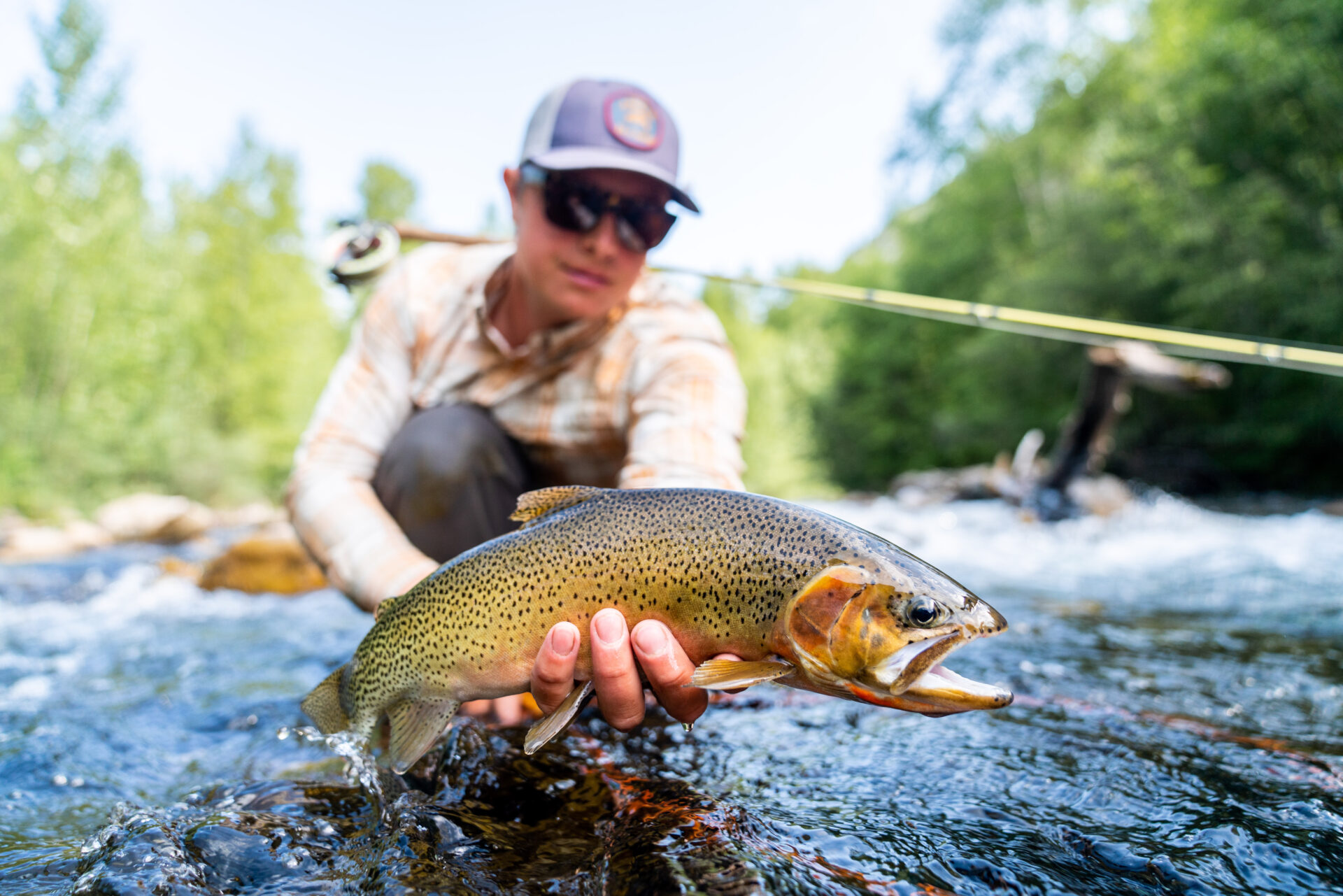
Most of the streams in the East Kootenays open for fishing on June 15, with the exception of a few rivers such as the Kootenay River, which is open year-round in certain reaches. Typically, the rivers are swollen with melt water at the opener, and most of the main rivers will come into fishing shape around the first week of July. Smaller creeks will clear up and drop faster than the larger streams. Some rivers will have fall closures from Sept. 1 to Oct. 31 to protect bull trout during their spawn. Region 4 has many specialized regulations in place to help support all the unique fisheries. It is everyone’s duty to stay up to date with the current regulations, and always check the regulations before heading out fishing. As with all rivers in BC, barbless hooks must be used.
Advertisement
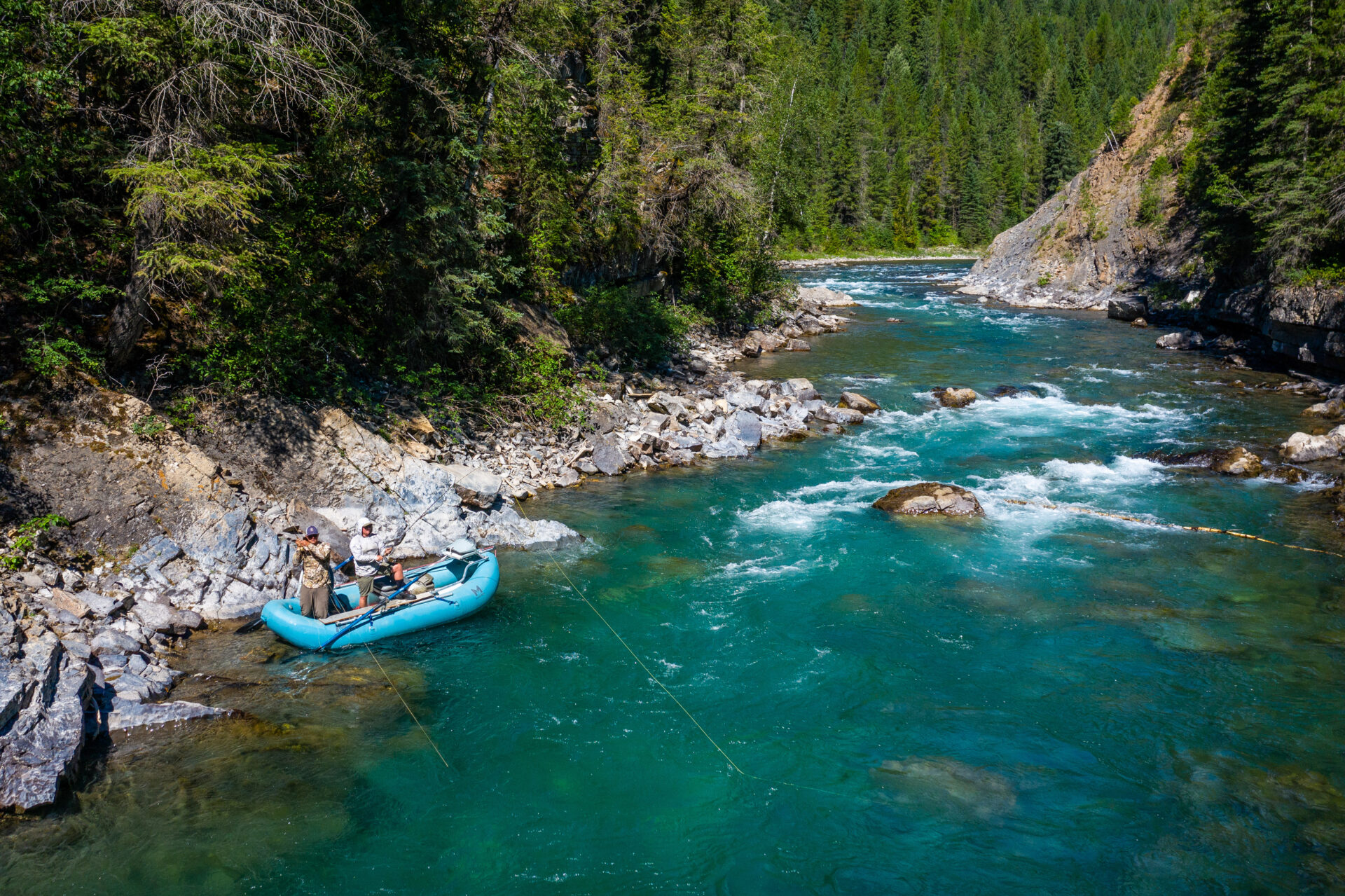
Westslope cutthroat trout can also be found in many lakes and high-mountain hike-in lakes in the region. These lakes offer spectacular scenery to target these beautiful fish, and the trout are often beautifully coloured.
Mid-July through September are arguably the best times to target cutthroat trout, and multiple hatches could be occurring at these times. Cutthroat trout are curious critters by nature and are quite willing to rise to investigate a fly. Usually, stoneflies are the first hatch to occur, and can occur anytime from late June to mid-July. Caddis can be found at various times throughout the season, as well as mayflies, such as green drakes and pale morning duns. Blue wing olive mayflies and October caddis are a great hatch for August, September and even into October. Hatches will migrate upstream on a river as they occur. An example of this may be you are fishing the lower stretches of a river and you experience a stonefly hatch. The next day, the section of river upstream of you is likely to experience the hatch, and so on. Throughout the season, terrestrial insects like beetles and ants are always available, and are often a great fly to fish when no hatch is occurring, as fish will pick them off opportunistically. During very warm days, terrestrial insects will be more active, and in August, grasshoppers will typically be quite active and the trout will seek them out. Small size 16 and size 18 ants are some of my favourite terrestrial patterns that always produce consistent success.
Advertisement
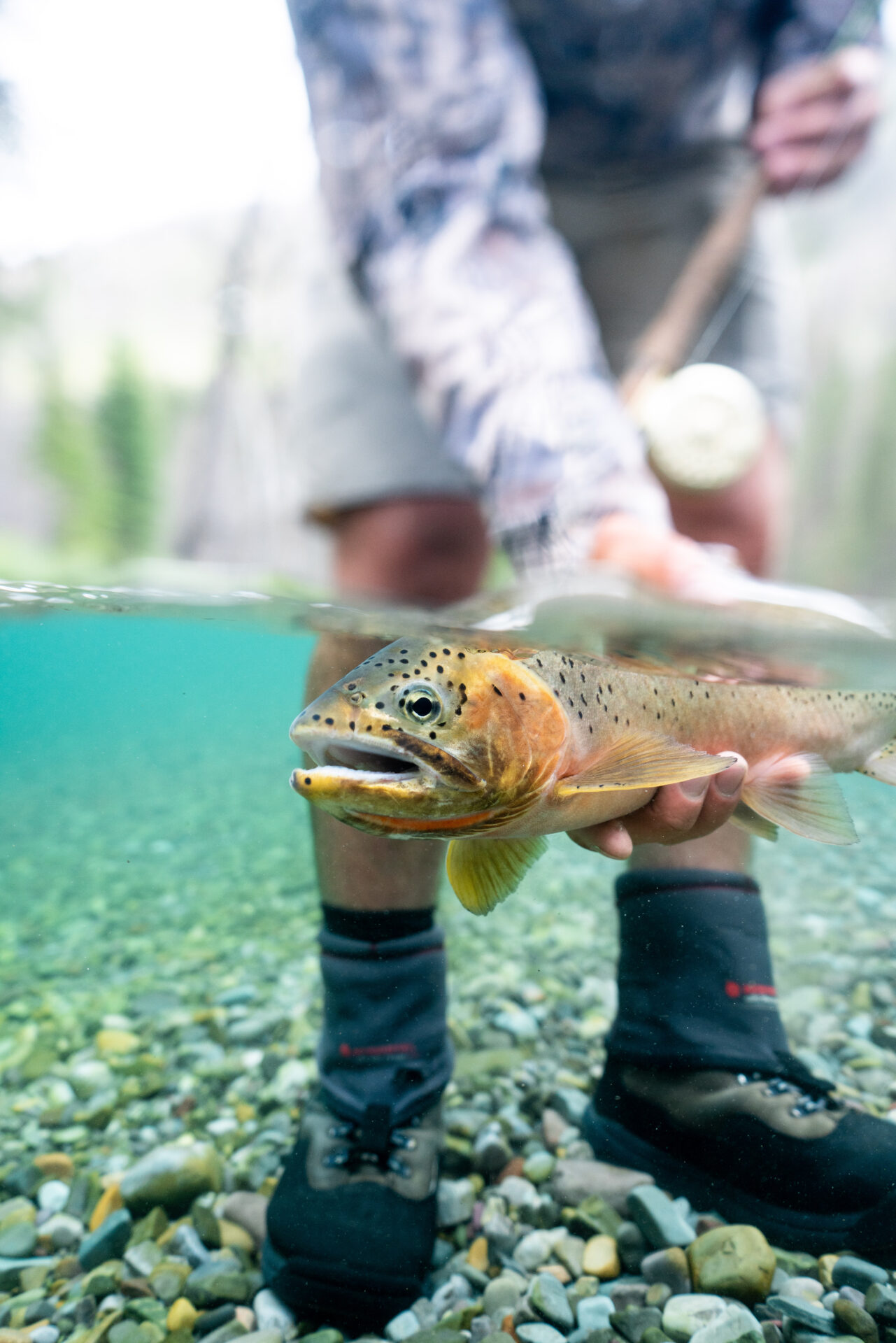
Another note on flies: It is important to carry some type of fly floatant with you. Gel-based floatants work great, as well as silicone powder shake floatants for drying your fly. I typically use both of these types in combination throughout the day, to keep my patterns riding high and dry. Floatant can also be applied to your leader, but I avoid letting it touch my tippet, as it can cause the tippet to float too high and create an unwanted shadow on the water. Whether it actually matters or not, I can’t be sure, but it’s one of those things that I like to think helps your chances of success when chasing these golden predators of the river.
As for gear, most anglers prefer a 4-weight or 5-weight medium- to fast-action fly rod. A 5-weight rod is ideal for the larger rivers where a longer cast may need to be made in potentially windy conditions, whereas a 4-weight is perfect for the smaller creeks and lighter presentations.
My preference for fly leaders is a nine-foot tapered 3x or 4x monofilament leader, which I then add two feet of tippet using a blood knot or a double surgeon’s knot. The size of tippet I use depends on the size of fly I am using, the size of trout or the presentation. The fly is then attached to the tippet with an improved clinch knot or Davy knot to reduce knot size on smaller flies. I am most often using 4x tippet, and 5x or 6x tippet for particularly small flies and weary trout. A 4-weight rod is my favourite, as I prefer to fish lighter, more delicate presentations. A lighter rod also absorbs the shock on your hook set and will allow you to fish lighter tippets without worry of snapping the tippet upon the set.
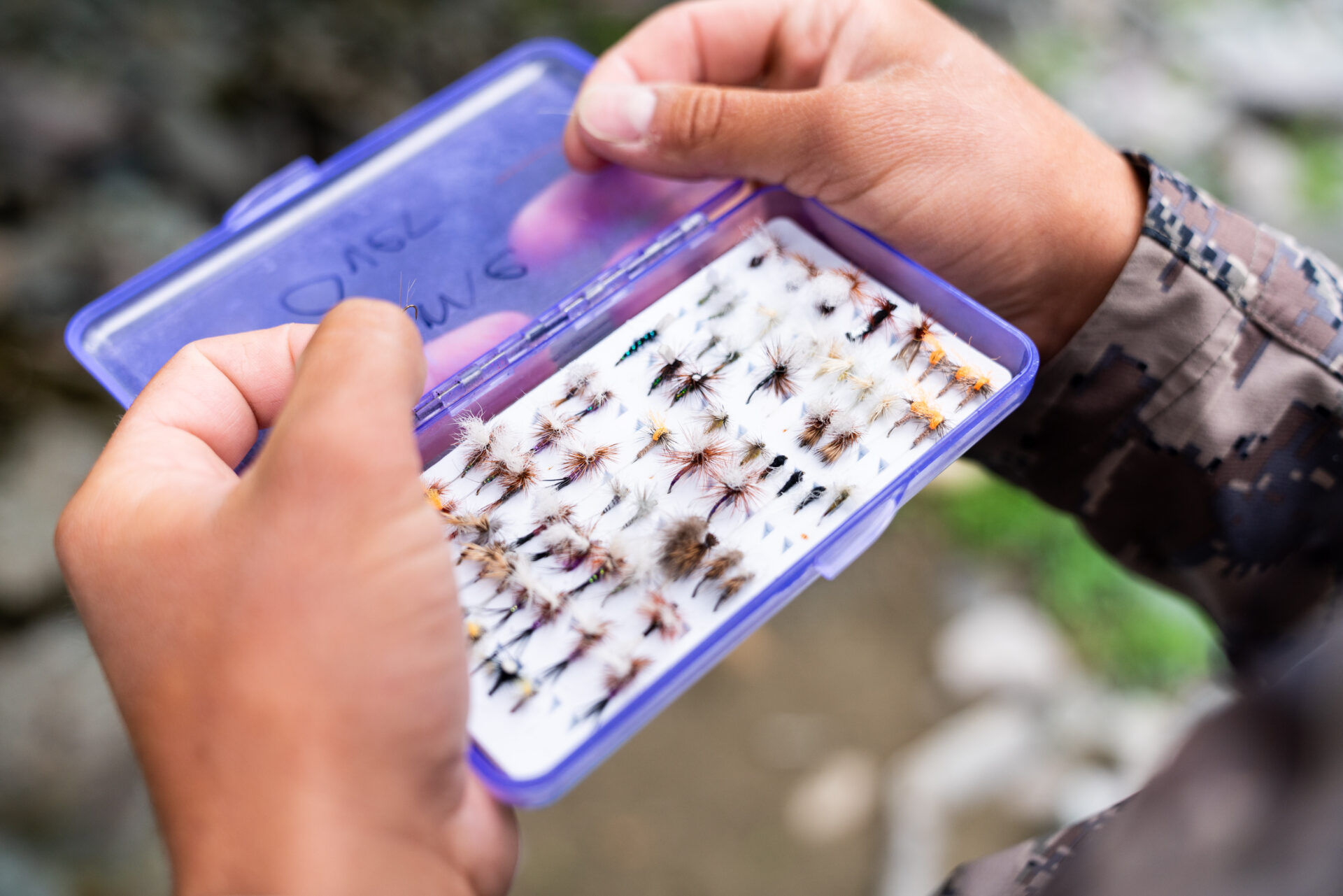
Cutthroat can be found in specific feeding areas that create congregations of insects to provide rest from stronger currents. For the most part, cutthroat trout are relatively lethargic trout compared to rainbows and will be found in slower areas. They will, however, move into the heads of runs during hatches or into tailouts, where they can easily feed. Bubble lines, beside boulders, off of drop offs or in gentle riffles are some of the most common areas to find westslopes. Often, a good day’s fishing is not determined by what fly you are using, but where you are fishing and how you are presenting your offering. When I am fishing for cutthroat, I will generally try and cover a run effectively on my first time through to prevent startling the pool. Starting your casts close to your feet is important, and then followed by working your way further and further away from you to prevent lining any fish that could be closer to shore. Try and cover water quickly, and avoid spending too much time in one spot, especially if you are not catching fish.
Cutthroat trout generally will rise to a fly and eat it relatively slowly compared to rainbow trout. When a cutthroat eats your fly, it is critical you do not set the hook too quickly. I like to watch the trout eat my fly and put its head down to swim back to the bottom before I lift my rod to set the hook. This is much easier said than done, as watching a trout rise to a fly is an exciting moment. Setting the hook is often the biggest challenge that new dry fly anglers are tasked with.
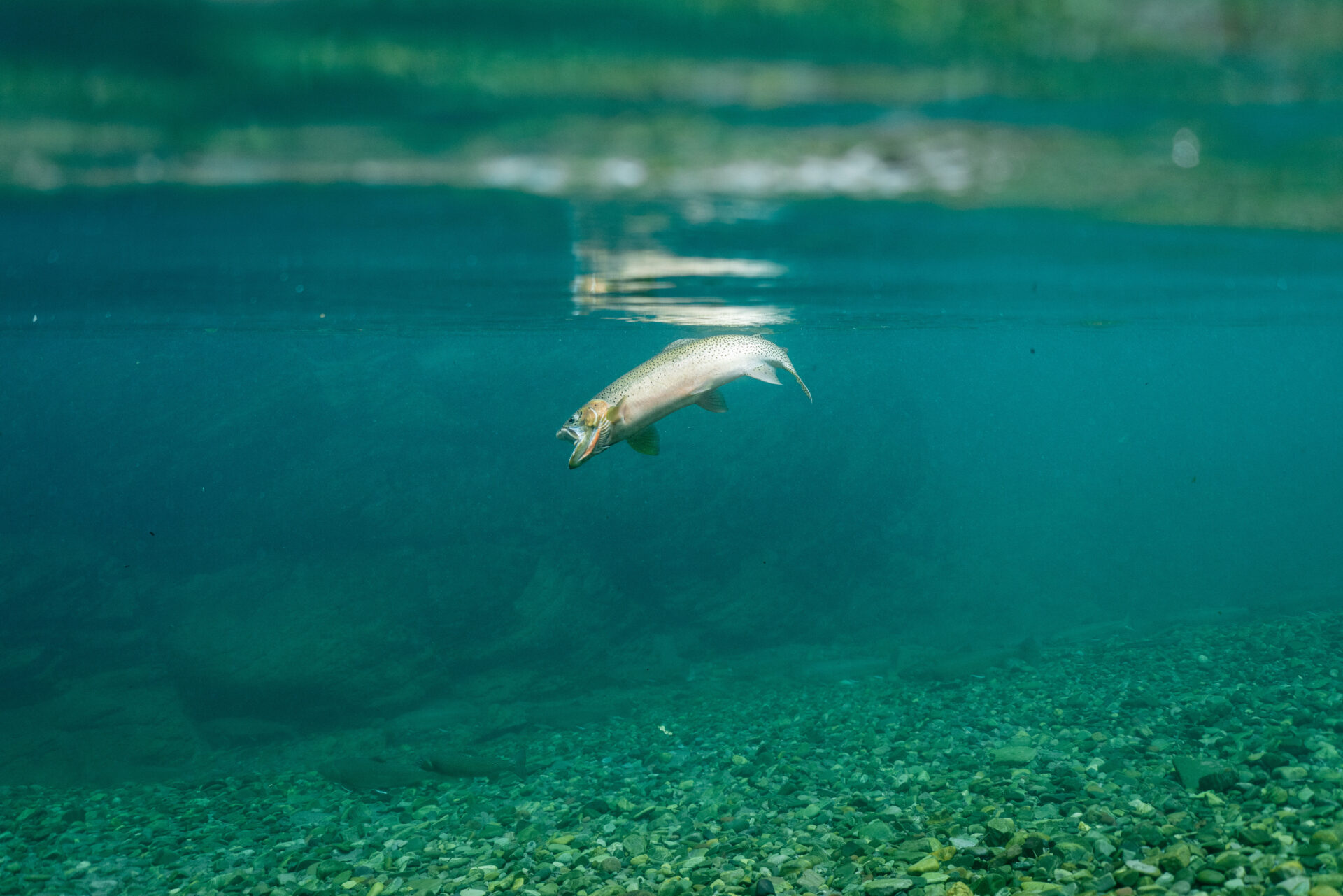
If dry fly fishing for cutthroat trout is something you have always wanted to try, I highly encourage it. Please follow the regulations carefully and respect the waters, lands and fish that you are accessing. Handle all fish with utmost care, as most waters are regulated as catch-and-release only. Always carry a landing net and use it versus pulling fish onto the shore.
Hopefully, some of this knowledge can be used to help you create some success on the river and along with priceless memories while out experiencing the incredible dry fly fishing of the East Kootenays.